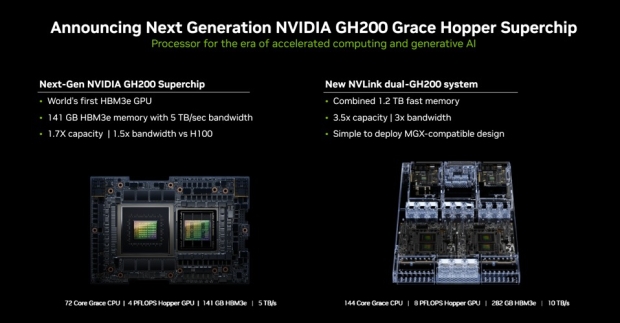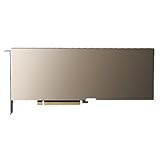NVIDIA's new Grace Superchip has just been benchmarked, giving us a look at NVIDIA's first-ever in-house server CPU that's based on the Arm architecture.

The Barcelona Supercomputing Center and the State University of New York have benchmarked the NVIDIA Grace Superchip, which doesn't beat Intel's new Xeon "Sapphire Rapids" CPUs with 48 cores and 96 threads per processor. NVIDIA's new Grace Superchips will be a competitive data center and HPC processor, which comes from its efficiency.
A single Grace CPU packs 72 cores and 480GB of LPDDR5X memory, while the Grace Superchip features 2 x Grace CPUs combined on a single board that provides a huge 144 cores and an even bigger 960GB of LPDDR5X memory. Impressive stuff to see, and just to once again point out the fact that this is an Arm-based CPU that NVIDIA has built.
Tom's Hardware reports that the benchmarks were shown off during the HPC Asia conference last week, with the Barcelona and New York researchers providing their findings during the conference. Both groups of researchers tested the hardware differently, with the Barcelona team focusing on NVIDIA's new Grace performance relative to Intel Skylake-X, while the New York researchers compared Grace against multiple AMD and Intel CPUs.
The Barcelona team benchmarked NVIDIA's new Grace Hopper, which is effectively a single Grace CPU without the GPU included, and the Grace Superchip up against dual Intel Xeon Platinum 8160 processors with 24 cores each, so 48 cores and 96 threads in total from the dual-processor Xeon CPU setup.

Intel's Xeon "Skylake-X" processors are turning 7 this year, so NVIDIA's new Grace Superchip flexing its superior silicon muscle by being 67% faster shouldn't come as a surprise, while the best results out of the Grace Superchip seeing a whopping 4.49x faster than the Intel Skylake-X processors. The Barcelona Supercomputing Center is replacing its Intel-powered MareNostrum 4 supercomputer with NVIDIA Grace hardware.
On the other side of the pond, the New York benchmarks give us a greater comparison between Intel's Xeon "Sapphire Rapids" and "Ice Lake" CPUs, AMD's newer EPYC "Milan" CPU, and Arm-based Amazon Graviton 3, and Fujitsu's A64FX.
NVIDIA's new Grace Superchip was the champion over the AMD EPYC Milan in 128-core CPU form, and the Arm-based offerings from Amazon and Fujitsu, as well as the 80-core Intel Xeon "Ice Lake" CPUs. But, it couldn't quite take on Intel's new Xeon "Sapphire Rapids" processors in a dual-processor setup each with 48 cores (so, 96 cores and 192 threads in total).
NVIDIA's new Grace Superchip is rated at 500W, while Intel's new Xeon Max 9468 processors are set at 350W TDP meaning that dual-processor setups using Sapphire Rapids would use upwards of 700W of power (and thus, 700W of cooling design required).
So if we were looking at efficiency, NVIDIA would win that with its new Grace Superchip at 500W.



